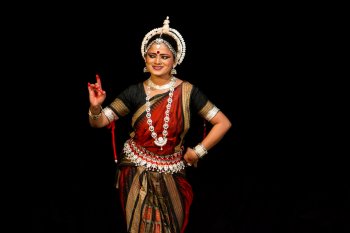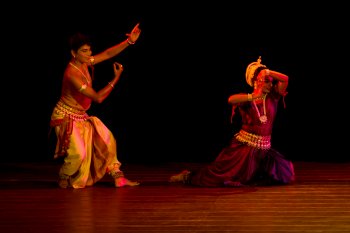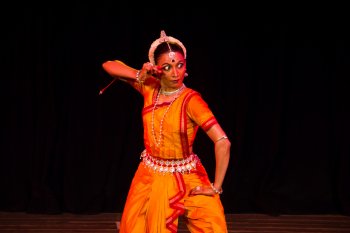
|   |

|   |
Naman 3 in celebration of Odissi - Probal Gupta, Bangalore e-mail: probs_gupta12@yahoo.co.in August 18, 2012 Madhulita Mohapatra, an Odissi exponent hailing from Bhubaneswar and presently settled in Bangalore, has been relentlessly trying to promote Odissi in the city through classes, workshops and definitely by conducting Naman, a festival celebrating the classical dance form Odissi. Brilliant administration has gradually elevated the festival spirit every year to a greater pinnacle. On August 5, the third edition of Naman festival presented by Nrityantar featured Sonali Mohapatra of the Debaprasad Das gharana, Bijayini Satpathy from Nrityagram, Pabitra Kumar Pradhan and his wife Sridutta Bhol from Orissa Dance Academy. Sonali Mohapatra commenced the evening with the “tari jhom tarita jhom” Pallavi set to raag Chakrabak. Choreographed by Guru Durga Charan Ranbir, neat tribhangis and chaukas surfaced right from the commencement. The abhinaya sequence “kaerae chanda” with the dramatic portrayal of the slaying of Poothana by baby Krishna came out well. Pabitra Kumar Pradhan, a senior dancer and teacher from Orissa Dance Academy, Bhubaneswar, the abode of late Guru Gangadhar Pradhan and presently managed by Aruna Mohanty, commenced his recital with Pancha Bhoota choreographed by Aruna Mohanty. Neat and subtle tribhangis, fine tuned chaukas aggrandized the effect of his performance. The pre-recorded music composition by Ramhari Das with the vocalist’s clear voice rendition elevated the overall effect. Good choreography portraying air, earth, water, sky and agni spoke of the choreographer’s brilliance.  Sonali Mohapatra  Pabitra Kumar Pradhan and Sridutta Bhol  Bijayini Satpathy  Musicians accompanying Bijayini Satpathy However, the best performance of Naman 2012 was by Bijayini Satpathy. She commenced her recital with ‘Srimati,’ a soliloquy of a maiden who beautifies herself only to realize that all her ornamentation is to ultimately subjugate at the feet of god. The item choreographed in a pallavi format with the dancer's energetic entry on to the proscenium with the rhythmic swaras “ta jhenu tari jhum” accentuated the overall effect of her performance. Neatly and perfectly executed chalas along with her mellifluous movement with the rhythmic syllables “dhi ga ma pa ga rae dha pa” spoke of choreographer Surupa Sen’s artistry. The micro macro mingling with the dancer completely surrendering herself at god’s feet was impressive. The masculinity as required to portray Krishna trying to pacify the furious Radha in “Priye Charushile” was excellent. The connoisseur was mesmerized with the dancer’s ability to portray a male character without any trace of feminism in a form which is highly lyrical. Bijayini’s dance portrays a suppleness of energy which is always in perfect control. The dramatic effect of holding Radha’s feet “daehi pada” in contrition for his mistakes was noteworthy. Bijayini concluded her recital with ‘Sita Haran,’ an excerpt from Tulsidas’ Ramcharit Manas. Sita is abducted by Ravana. One appreciates the dancer’s riveting abhinaya when Ravana lifts the earth with Sita, drives his aerial chariot and confronts Jatayu. The aficionados were enraptured with the bird’s awesome roundish neck movement typical to that of a bird, Jatayu’s zigzag movement making the prekshaya feel the stage was a sky, supported by skilful lighting by Lynne Fernandez.. The incision of Jatayu’s wings, his writhing in pain as he falls on the ground were intensely executed by the dancer. Quick succession of characters without a slightest expressional overlap, the archetypal movement of the golden deer was brought out with finesse. Probal Gupta trained in Kathakali under two legends Late Kalamandalam Govindan Kutty and Guru Fact Padmanabhan under whom he is presently continuing his specialization in Stree Vesham genre of Kathakali. |